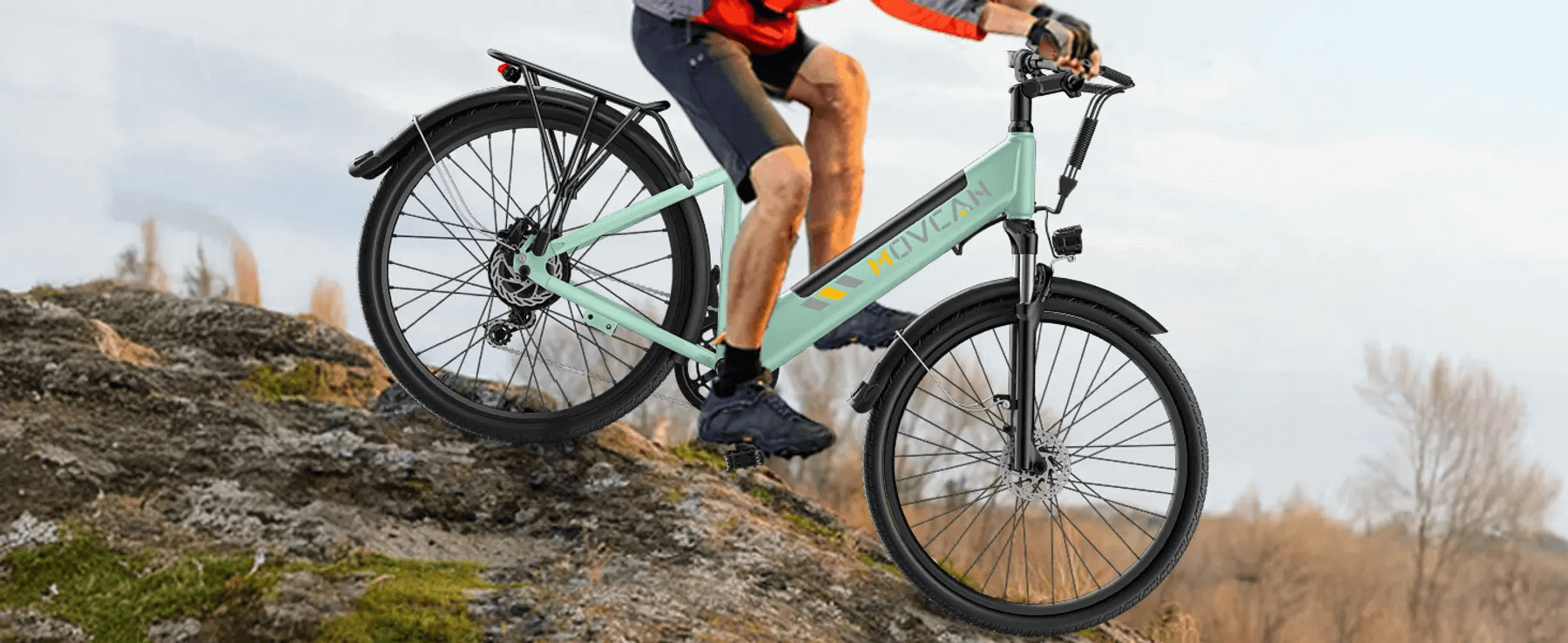Want to restore that confident stopping power on your electric bike? Follow our step-by-step hydraulic brake bleeding guide to eliminate that spongy brake feel and ensure your MoVcan eBike performs at its best on every ride.
Why Your MoVcan eBike's Hydraulic Brakes Need Bleeding
If you've noticed your eBike's brakes feeling "spongy" or the lever pulling too close to the handlebar, it's likely time for a brake bleed. Hydraulic brakes need occasional servicing as fluid gets dirty and air bubbles can form, causing that characteristic "spongy" feel instead of the tight, crisp performance you expect.
Even with no cables to replace, hydraulic systems require maintenance to function properly. As temperature fluctuations occur throughout the year, gases dissolved in the hydraulic fluid can slowly form tiny bubbles. Since gas is compressible, your brakes won't feel firm, and the lever will travel closer to the grip before engaging.
When to Bleed Your MoVcan eBike Brakes
Look for these warning signs that indicate it's time for a brake bleed:
- Brake lever feels spongy or mushy
- Lever pulls too close to the handlebar before engaging
- Decreased stopping power
- Inconsistent braking performance
For optimal performance, hydraulic disc brakes should be bled approximately every six months, depending on how often and how far you ride. This regular maintenance ensures maximum braking power and precision, especially important for the higher speeds and weights of eBikes.
Tools You'll Need for Bleeding MoVcan Hydraulic Brakes
Before starting, gather these essential tools:
- MoVcan hydraulic brake bleeding kit
- Appropriate hydraulic fluid (mineral oil for most systems)
- Torx key set
- Piston press
- Clean rags
- Isopropyl alcohol for cleaning
- Bike work stand (highly recommended)
- Bleed blocks
- Disposable gloves
Pro tip: Check your brake manufacturer's specifications to ensure you're using the correct hydraulic fluid. Most systems use either DOT fluid (for SRAM, Avid, Hayes, Hope) or Mineral Oil (for Shimano, TRP, Magura). Using the wrong fluid type can damage your system.
Step-by-Step MoVcan Brake Bleeding Guide
Preparation
- Secure your eBike: Mount your MoVcan on a bike stand for stability during the process.
- Clean the brake components: Clean your brake calipers thoroughly with rubbing alcohol or simple green and rinse well. Dirt mixed with braking heat creates poor performance.
- Prepare your workspace: Lay down old towels to catch any spilled fluid, and wear disposable gloves.
The Bleeding Process
- Remove the wheels and brake pads: Take out your brake pads and store them away from any potential fluid contamination.
- Insert the bleed block: Place the appropriate bleed block into the caliper to keep pistons in place.
- Position the brake lever: Rotate the brake lever to a horizontal position with the bleed port facing upward. This positioning is crucial as it allows air bubbles to rise toward the port for removal.
- Connect your bleed kit: Attach the syringe with fresh fluid to the caliper and the empty syringe to the lever port.
- Open the bleed ports: Carefully open both ports using the appropriate tools.
- Push fluid through the system: Gently push fluid from the caliper up to the lever, watching for air bubbles to exit.
- Tap the lines: Lightly tap along the brake lines to help dislodge stubborn air bubbles.
- Close the ports: Once no more bubbles appear, close the bleed ports and remove the syringes.
- Reinstall components: Clean any spilled fluid, reinstall your brake pads and wheels.
- Test the brakes: Test the feel of your brakes before riding.
Advanced Techniques for Perfect MoVcan Brake Performance
For the best results, consider these professional tips:
- Ensure the bleed port on your lever is at the highest possible point while the port on your caliper is the lowest point in the system when bleeding. Otherwise, bubbles will get trapped in the line.
- Perform a full system flush annually to replace all old fluid, not just remove air bubbles.
- Check pad wear while you have the system open. Worn pads require the lever to travel farther for the same braking effect.
- Consider upgrading to high-performance brake pads if you do a lot of steep descents.
Maintenance Schedule for MoVcan eBike Brakes
To keep your brakes performing optimally:
- Monthly: Check brake pad wear and clean rotors with isopropyl alcohol
- Quarterly: Inspect lines for damage and check for leaks
- Bi-annually: Perform a basic brake bleed
- Annually: Complete full system flush and fluid replacement
Troubleshooting Common MoVcan Brake Issues
If you're still experiencing issues after bleeding:
- Persistent sponginess: You may have air trapped in the caliper. Try elevating the caliper and tapping while bleeding again.
- Piston sticking: Clean and lubricate the pistons with silicone lubricant.
- Contaminated pads: If fluid contacted your pads, replace them immediately as they cannot be cleaned.
- Leaking connections: Check and tighten all fittings, replace o-rings if necessary.
Final Thoughts
Proper hydraulic brake maintenance is essential for your safety and riding enjoyment on your MoVcan eBike. Regular bleedings ensure reliable stopping power, especially important with the added speed and weight of electric bikes.
For riders uncomfortable with DIY maintenance, professional service is always an option. Many bike shops offer brake bleeding services for around $25 per brake. But with the right tools and following this guide, you can easily perform this maintenance at home.
Check out our complete guide to MoVcan eBike maintenance for more helpful tips on keeping your electric bike in peak condition.
Have questions about hydraulic brake maintenance? Visit our community forum to connect with other riders or browse our comprehensive eBike parts catalog for all your maintenance needs.
For more information on hydraulic braking systems, check out this helpful article on hydraulic brake technology from Cycling Weekly.



Share:
Complete MoVcan E-Bike Technology Specs Comparison
How to Adjusting Mechanical Disc Brakes on Your MoVcan eBike